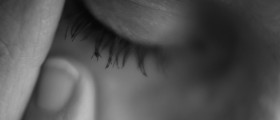General overview
A headache is defined as pain anywhere in the areas involving the head or neck and can be a symptom of a number of issues of these areas.
There are certain areas of the head and neck that have these pain receptors and they include:
- The periosteum, which is the tissue that covers the skull.
- Nerves
- Muscles.
- Arteries and veins.
- Eyes, ears and sinuses.
- Subcutaneous tissues.
- Mucous membranes.

Classification and characteristics of headaches
Headaches are classified as either primary or secondary in origin.
90% of headaches are of primary origin and aren't associated with any underlying conditions or illnesses. This means that, although they do cause pain and discomfort, they are not regarded as dangerous. Migraines and tension-type headaches are the most common primary headaches are there are also more rare types as well.
The following are examples of primary headaches and their characteristics:
- Migraines - these present with a pulsating head pain and are associated with nausea as well as light and sound sensitivity.
- Tension-type headaches -present with non-pulsating, "bandlike" pressure on both sides of the head and are not associated with any other symptoms.
- Cluster headaches - these are very severe, short episodes of pain lasting between 15-120 minutes. They usually involve one eye and are associated with autonomic symptoms (such as tearing, nasal congestion or a red eye) which occur at the same time as the headache. These are the worst headaches a person can experience and can be treated with triptans and prevented with the steroid Prednisone and drugs such as lithium or ergotamine.
- Trigeminal neuralgia - this is a shooting face pain which can involve either side and is managed with tricyclic antidepressants or epilepsy medication.
- Hemicrania continua - this is a persistent and continuous one-sided headache with episodes of severe pain and can be relieved with anti-inflammatory medication.
- Other primary headaches are associated with activities such as coughing or sneezing, physical exertion such as with exercise, prolonged sleeping and even during sexual intercourse.
Secondary headaches are caused by underlying illnesses and conditions and they may be harmless but can be dangerous as well. These conditions can include the following:
- Meningitis - this is inflammation of the tissue covering the brain and spinal cord (meninges) and can present with fever, stiff neck, light sensitivity and projectile vomiting.
- Subarachnoid bleeding - this is bleeding between the skull and the brain and presents with a sudden, severe (thunderclap) headaches and stiff neck with no fever present.
- Intracranial hemorrhage - this is bleeding inside the brain.
- Ruptured aneurysm - which presents with a headache only and then decreased consciousness.
- Brain tumor - presents with a dull headache which worsen with exertion and accompanied by nausea and vomiting.
- Temporal arteritis - this is due to inflammation of the temporal arteries, which is common in the elderly, and results in decreased blood flow to the brain. It can present with fever, headache, weight loss and jaw claudication.
- Having associated fevers or weight loss together with headaches.
- New onset headaches in patients with HIV.
- New onset headaches in patients with cancers.
- Sudden onset and severe headaches (thunderclap headaches).
- Neurological symptoms and signs such as decreased consciousness, coma, personality or mental status changes, seizures, single-limb convulsions or inability to move limbs.
- Onset of a new type of headache after 50 years of age.
The important message to note is that most headaches are as a result of pain receptor stimulation in the areas around the head and neck. These causes can be managed conservatively and may even resolve on their own. In the event that the headaches are persistent, worsen or change in characteristic then it would be advisable to consult your primary care physician. Here, the cause of the headache can be found and managed or it may need to be referred to a specialist for further management.
- Photo courtesy of SteadyHealth
















